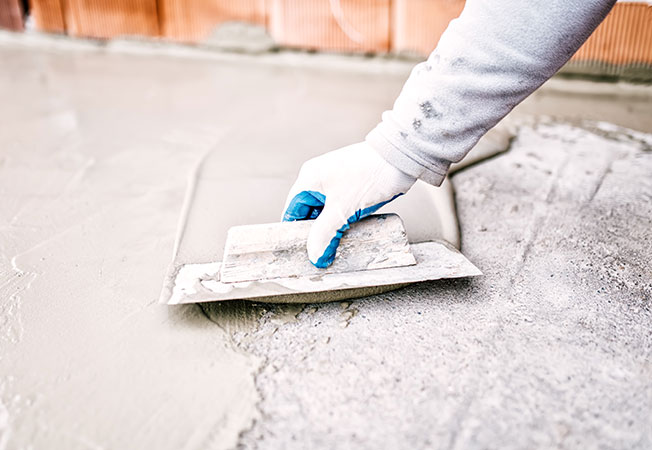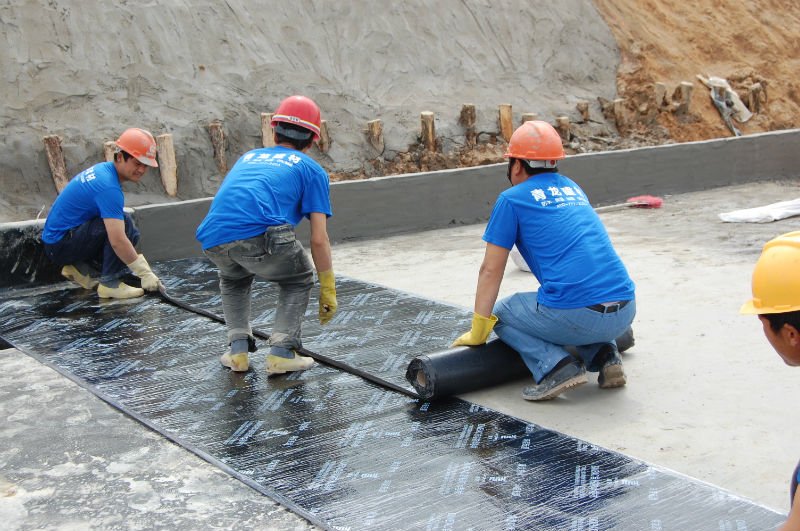Just How Waterproofing Functions: A Detailed Take A Look At Techniques and Technologies
Waterproofing is necessary for securing frameworks from moisture-related damages. It involves different methods and modern technologies that develop barriers versus water intrusion. Standard approaches, such as compacted clay, coexist with modern developments like liquid-applied membrane layers. Comprehending the nuances of these strategies is important for effective application. Nevertheless, the performance of any type of waterproofing option hinges not only on the strategies made use of yet likewise on recurring upkeep and assessment. What are the essential elements that influence long-lasting performance?
Comprehending the Basics of Waterproofing
Waterproofing is a vital procedure that secures frameworks from water invasion, which can result in significant damages in time. This approach includes the application of different products and techniques made to produce an obstacle against dampness. The main objective is to avoid water from passing through surfaces, which can create degeneration, mold and mildew development, and architectural instability.Various factors affect the selection of waterproofing method, consisting of the type of structure, its place, and environmental problems. Understanding the physics of water motion and the residential or commercial properties of various products is important in choosing an effective waterproofing solution.Effective waterproofing not just safeguards structures yet likewise boosts their longevity and integrity. Normally, it is integrated into the design stage of building to guarantee complete protection. As recognition of water-related issues expands, the relevance of comprehending waterproofing principles comes to be increasingly clear to designers, contractors, and homeowner alike.
Typical Waterproofing Techniques
Standard waterproofing techniques have been made use of for centuries, depending on reliable methods and products to guard structures from water damages. Among the earliest approaches involves using clay, which, when compressed, develops a natural barrier against wetness. In addition, asphalt, a sticky, black material stemmed from petroleum, has been employed for its water-resistant properties, often put on roofs and foundations.Another technique includes the application of lime-based plasters, which supply a breathable layer that permits wetness to leave while stopping water ingress. Thatch roof covering, a typical approach still seen in some societies, uses outstanding waterproofing because of its firmly packed straw layers.Moreover, the use of stone and brick has been famous, as these materials are inherently resistant to water when properly installed. In general, typical waterproofing techniques emphasize the relevance of selecting appropriate materials and construction methods to boost sturdiness versus water intrusion.
Modern Waterproofing Technologies
Innovations in contemporary waterproofing modern technologies have actually reinvented the way frameworks are shielded from water damages. Cutting-edge approaches such as liquid-applied membrane layers and advanced sealers have actually improved the efficiency and convenience of waterproofing remedies. These technologies enable smooth application, lowering the threat of leakages and ensuring extensive coverage over complicated surfaces.Moreover, the combination of clever technologies, such as dampness sensors and automated surveillance systems, allows real-time analysis of waterproofing efficiency. This proactive strategy helps with timely maintenance and lowers long-lasting repair work costs.Additionally, developments in spray-applied coatings provide quick application and superb attachment, adapting to numerous substratums while providing robust defense. Techniques like polymer-modified systems additionally enhance versatility and resilience, making them appropriate for diverse atmospheres. Generally, contemporary waterproofing technologies not just mitigate water breach however additionally add to the long life and sustainability of frameworks, noting a considerable change in the industry.
Products Utilized in Waterproofing
The performance of waterproofing remedies heavily depends on the materials utilized in their application. Different materials are used to develop barriers versus water ingress, each with one-of-a-kind homes fit for various settings. Generally used products consist of membranes, finishings, and sealants.Liquid-applied membrane layers, usually made from polyurethane or acrylic, create a smooth obstacle that adapts to complicated surfaces. Sheet membrane layers, generally built from rubber or polycarbonate, offer toughness and are excellent for bigger locations. In addition, cementitious waterproofing products, made up of cementitious substances, offer outstanding adhesion and flexibility.Sealants made from silicone or polyurethane are important for joints look at this now and seams, making sure extensive security. Additionally, innovative products, such as geo-composite membrane layers, incorporate numerous functions, enhancing efficiency. In general, the selection of waterproofing materials is crucial in accomplishing long-lasting and effective water resistance, customized to specific job requirements and environmental problems.
Common Applications of Waterproofing
Waterproofing plays a vital duty in different fields, guaranteeing the durability and honesty of structures. Usual applications consist of residential remedies that secure homes, commercial framework that safeguards organizations, and industrial setups that call for robust security versus wetness. Understanding these applications highlights the relevance of waterproofing in keeping both safety and security and capability throughout various settings.
Residential Waterproofing Solutions
Several homeowners face obstacles with wetness invasion, making reliable household waterproofing solutions essential. Numerous methods exist to resolve this issue, consisting of exterior and interior waterproofing systems. Inside options usually entail the application of sealers and finishes to basement walls, which help stop water infiltration. Outside approaches commonly consist of the installation of drain systems and water-proof membrane layers that divert water far from the foundation.Additionally, homeowners may take into consideration sump pumps to eliminate water buildup and dehumidifiers to control humidity degrees. Correct grading and making use of gutters likewise play a crucial function in taking care of water flow around the home. By implementing these techniques, house owners can substantially lower the risk of water damage and mold development, making certain a dry and risk-free living setting.

Business Framework Protection
Efficient waterproofing remedies play a critical function in the protection of business facilities. Drainage & waterproofing company Omaha. These techniques are essential for securing buildings, auto parking structures, and bridges from water damages, which can jeopardize structural stability and lead to expensive repair services. Usual applications consist of the installation of membrane layers, layers, and sealers that produce barriers against dampness seepage. Areas such as cellars, roofings, and exterior walls are typically prioritized to guarantee longevity and resilience. Additionally, waterproofing systems can enhance power efficiency by protecting against water-related issues that may bring about mold and mildew growth and wear and tear. By implementing robust waterproofing measures, homeowner can protect their financial investments and preserve operational performance, ultimately contributing to the overall sustainability of industrial facilities
Industrial Applications Overview
While numerous markets encounter distinct visite site obstacles, the requirement for trusted waterproofing solutions remains a continuous in industrial applications. Industries such as production, construction, and energy usually encounter atmospheres where moisture direct exposure can threaten architectural integrity and operational effectiveness. In producing facilities, waterproofing is important for protecting machinery and materials from water damage. In construction, it safeguards foundations and basements versus groundwater seepage. The power market counts on waterproofing for the security of devices in hydroelectric plants and offshore frameworks. Furthermore, food handling sectors use waterproofing to index ensure health and compliance with safety and security standards. On the whole, efficient waterproofing options are vital for boosting durability, safety, and productivity throughout numerous commercial setups.
Upkeep and Durability of Waterproofing Solutions
Although waterproofing services are designed to supply long-lasting protection against moisture invasion, routine maintenance is important to guarantee their performance and long life - Drainage & waterproofing company Omaha. Routine inspections play a substantial function in recognizing potential problems such as fractures, peeling, or indicators of water damages. Resolving these troubles quickly can avoid further wear and tear and pricey repairs.Additionally, cleaning up the surface of waterproofed areas helps remove dirt and particles that could compromise the honesty of the waterproofing barrier. It's additionally recommended to reapply protective coatings or sealants as advised by makers to preserve optimal efficiency. Environmental variables, such as UV exposure and extreme climate problems, can impact the life-span of waterproofing materials, making regular assessment important
Regularly Asked Inquiries
Can Waterproofing Be Applied in Winter?
The concern of applying waterproofing in chilly climate raises issues concerning attachment and healing. Many products might not perform at their finest in low temperature levels, demanding mindful selection and consideration of details standards for effective application.
The Length Of Time Does Waterproofing Normally Last?
The period of waterproofing performance differs based on materials and environmental factors. Normally, it can last from 5 to ten years, however regular maintenance and evaluations are important to guarantee peak performance and long life.
Is Do It Yourself Waterproofing Effective and Safe?
The efficiency and security of DIY waterproofing rely on numerous variables, consisting of worldly high quality and application method. While some individuals achieve sufficient results, others may experience issues that compromise long-lasting defense and architectural stability.
What Are the Signs of Failing Waterproofing?
Indications of failing waterproofing include noticeable water stains, peeling off paint, mold growth, mildewy odors, and wetness in walls or ceilings - Water Solutions Omaha. These signs recommend jeopardized barriers, demanding prompt evaluation and possible removal to prevent additional damages
How Do I Choose the Right Waterproofing Service Provider?
